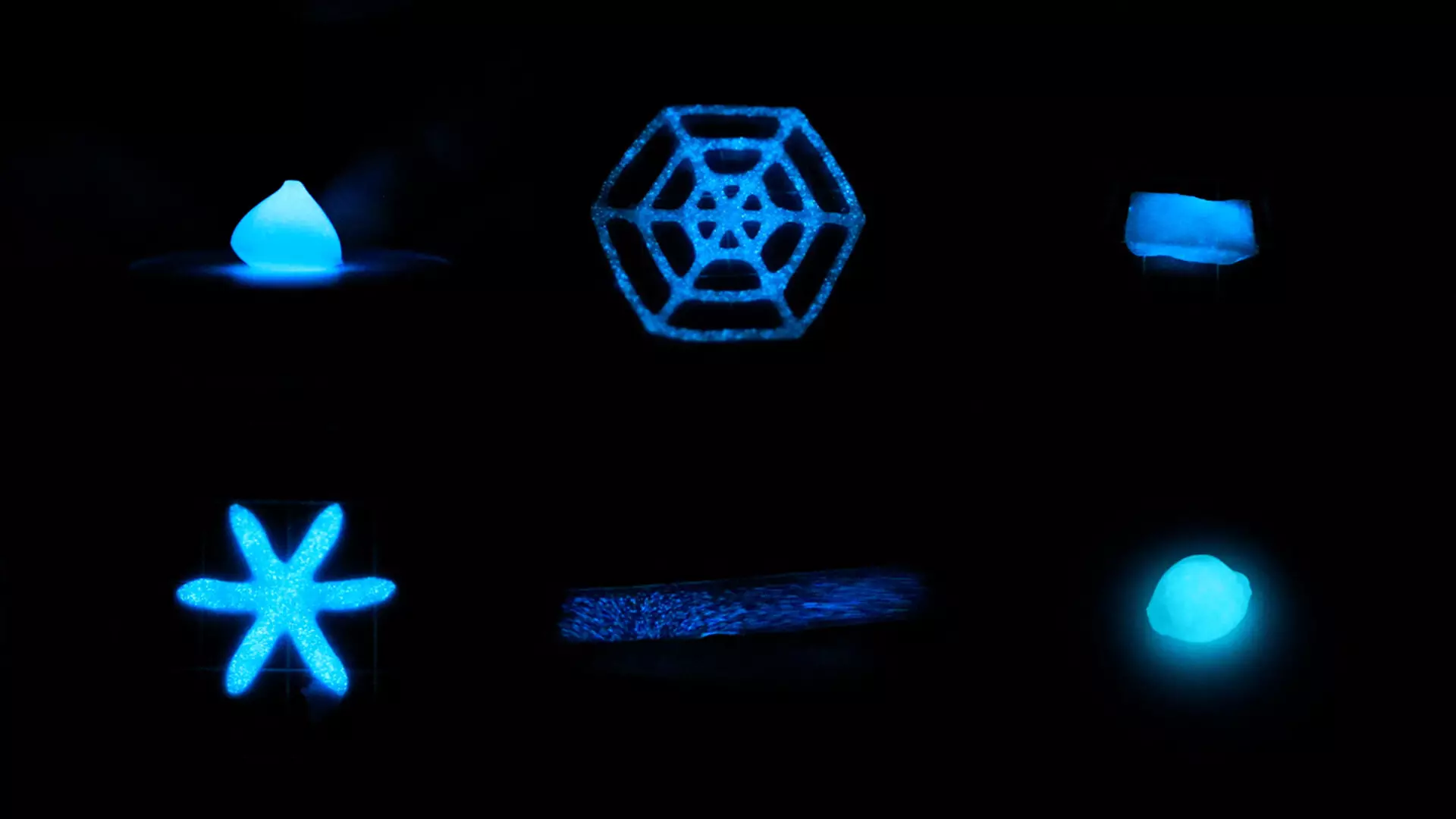A team of researchers from the University of California San Diego has developed a groundbreaking material that glows in response to mechanical stress. Inspired by the bioluminescent waves observed during red tide events in San Diego’s beaches, these materials are soft, yet durable. In this article, we will delve into the details of this innovative development and explore its potential applications.
The researchers behind this project harnessed the power of nature to create these luminescent materials. The primary components of these materials are dinoflagellates, single-celled algae, and a seaweed-based polymer called alginate. By mixing these elements and processing them with a 3D printer, the researchers were able to create a diverse range of shapes.
When subjected to compression, stretching, or twisting, the dinoflagellates within the materials emit light, mimicking the behavior observed in the ocean. In nature, dinoflagellates produce flashes of light as a defense mechanism against predators. In tests, the materials glowed when pressure was applied, and even under the weight of a rolling foam ball. The intensity of the glow correlated with the magnitude of the mechanical stress.
To ensure the materials’ resilience and durability, the researchers reinforced them with a second polymer called poly(ethylene glycol) diacrylate. Furthermore, coating the materials with a stretchy rubber-like polymer called Ecoflex provided protection in acidic and basic solutions. These measures allowed the materials to maintain their form and bioluminescent properties even when stored in seawater for up to five months.
These materials require minimal maintenance. The dinoflagellates within them need periodic cycles of light and darkness to function properly. During the light phase, the dinoflagellates photosynthesize to produce food and energy. Then, during the dark phase, they utilize that energy to emit light when mechanical stress is applied. This self-sustaining property closely mirrors the natural processes underlying bioluminescent events during red tide occurrences in the ocean.
The researchers envision a wide range of potential applications for these glow-in-the-dark materials. One possibility is their use as mechanical sensors to measure pressure, strain, or stress. Their response to mechanical stimuli makes them ideal for this purpose. Additionally, these materials could find utility in soft robotics and biomedical devices. Light signals emitted by these materials could be utilized for treatments or controlled drug release.
The development of glow-in-the-dark materials that respond to mechanical stress presents a significant breakthrough in material science. Drawing inspiration from bioluminescent waves observed in nature, the researchers have created versatile and resilient materials with a range of potential applications. Although further development and optimization are necessary, these materials hold promise for the future of sensor technology, soft robotics, and biomedical devices. With continued research and refinement, these materials could revolutionize various fields, offering innovative solutions for real-world challenges.


Leave a Reply